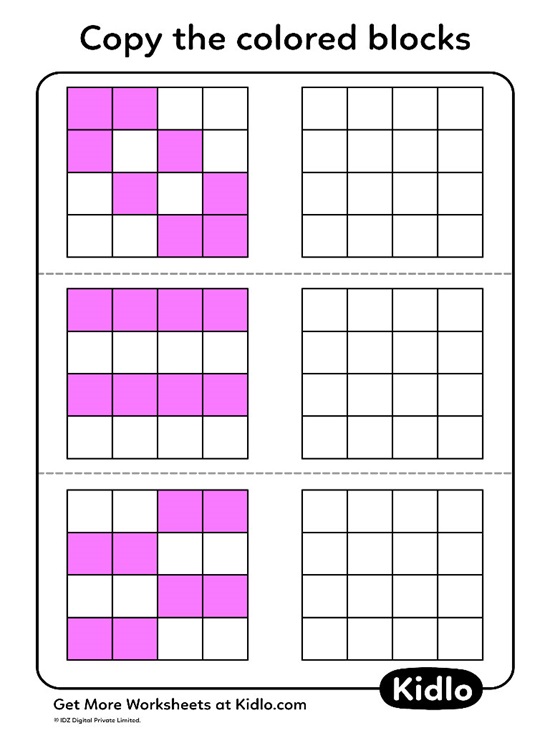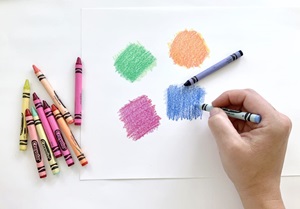Copying patterns is a fun and engaging activity that combines creativity with skill-building, making it a favorite among children of all ages. Whether it’s replicating a simple sequence of colors or constructing intricate designs with blocks, this activity helps kids strengthen their observation and fine motor skills while fostering focus and patience. Its versatility allows it to be tailored to different developmental stages, ensuring every child finds it both challenging and rewarding. Even better, copying patterns can be transformed into a collaborative game, encouraging teamwork and social interaction. Let’s explore the many benefits of this activity and how you can easily incorporate it into your child’s playtime or group settings.
In this article we will go through a few things, such as the benefits of this activity, how to get started and how to tailor it to different age groups. We will also point you to some great websites with amazing resources that you can download. If you are thinking about making this a group activity, there are also some tips for you and some invitation templates. So, let’s get started!
What Are the Benefits of Copying Patterns Activity?
Enhances Cognitive Skills
Copying patterns requires children to analyze and replicate sequences, which boosts critical thinking and problem-solving abilities. As they identify patterns and predict what comes next, they develop logical reasoning and improve their understanding of sequences, an essential skill for math, coding, and other subjects.
Improves Focus and Attention to Detail
Successfully copying a pattern demands concentration and precision. This activity trains children to pay close attention to details and follow instructions carefully, which can translate into improved academic performance and better problem-solving in everyday life.
Encourages Creativity and Expression
While copying patterns might seem rigid at first glance, it actually nurtures creativity. Children often explore variations of the patterns they see, experimenting with new colors, shapes, or arrangements, allowing them to express their individuality while honing their skills.
Builds Memory and Retention
Pattern copying helps children improve their short-term memory as they recall the elements of a sequence. Over time, this boosts their ability to remember and apply knowledge in other areas, including spelling, math, and even daily routines.
Promotes Social Skills in Group Settings
When done in a group, pattern-copying activities encourage collaboration and communication. Children can work together to create or replicate patterns, share ideas, and learn to value teamwork and mutual respect. This builds their confidence and helps them navigate social interactions more effectively.
How to Get Started?
Getting started with copying patterns is simple and requires minimal preparation. Begin by choosing materials appropriate for the child’s age and skill level. For younger children, start with basic objects like colorful blocks, beads, or crayons to create straightforward patterns, such as alternating colors or simple shapes. Older children can handle more complex patterns using puzzles, geometric designs, or printed worksheets.
For printed worksheets, there are a number of amazing websites that provide them for free. You probably want to check out these worksheets Kidlo. They have so many different worksheets for copying patterns activity, and they vary in difficulty. There are two different choices for the patterns, patterns in connecting dots and patterns on a grid. Both are super fun to do and will keep your children engaged and entertained.



You should also check out 15 Worksheets if you are looking for different types of copying patterns activity worksheets. There are worksheets that require children to copy patterns on a grid, with different colors or different shapes. They are perfect for older kids as they are more complex. There is also a worksheet that gets your children to copy patterns on easter eggs! These aren’t just great to improve their observational skills, it also encourages creativity and adds an extra layer for fun. This is of course, the perfect activity worksheet for when easter is approaching.



Introduce the activity as a game or challenge to keep it engaging. For example, you can time how long it takes for the child to copy a pattern or encourage them to create patterns for others to replicate. Gradually increase the complexity as their skills improve, ensuring the activity remains both enjoyable and rewarding.
Copying patterns is a versatile activity suitable for children as young as toddlers and up through early school age. Toddlers and preschoolers benefit from the foundational skills it builds, like recognizing shapes and colors, while older children can enjoy the increased challenge and creativity involved in replicating more complex sequences. Its adaptability makes it an excellent learning tool for a wide range of developmental stages. Here are a few ways to tailor this activity to different age groups:
Toddlers (Ages 2-3)
For toddlers, keep patterns simple and use large, easy-to-handle objects like wooden blocks, colorful rings, or big beads. Stick to straightforward two-item sequences, such as alternating colors (red-blue-red-blue) or shapes (circle-square-circle-square). Offer plenty of encouragement and hands-on assistance to help them understand the concept.
Preschoolers (Ages 4-5)
Preschoolers can handle slightly more complex patterns involving three or four elements, like ABBA or ABC sequences. Use a mix of materials, such as stickers, buttons, or crayons, to keep them engaged. Introduce verbal cues to reinforce learning, like naming the colors or shapes as they copy the pattern.
Early Elementary (Ages 6-8)
At this stage, children can work on intricate patterns involving multiple elements or more abstract designs. Use graph paper for symmetrical patterns, craft supplies for intricate designs, or digital tools like pattern-building apps for added variety. You can also introduce math-based patterns, such as skip counting or basic geometric sequences, to challenge their critical thinking.
Older Kids (Ages 9 and Up)
For older children, turn pattern copying into a creative challenge by incorporating art or design elements. Encourage them to invent their own patterns or replicate intricate designs from reference images. You can also incorporate coding concepts, like binary or algorithm-based patterns, to make the activity more stimulating and relevant to their interests.
By adjusting the complexity and materials used, this activity can grow with your child and continue to provide meaningful learning opportunities at every stage. And if you are looking for other pattern recognition activities for your young children, you can head to Pattern Recognition Activity for Kids: 8 Benefits and Free Templates
Is This a Fun Group Activity?
Absolutely! Copying patterns is an excellent group activity that fosters collaboration and social interaction among children. In a group setting, kids can take turns creating and copying patterns, which adds a fun, interactive element. It also encourages friendly competition, teamwork, and the exchange of creative ideas. Group activities can make pattern copying even more engaging by introducing challenges like “guess the next element” or cooperative games where everyone contributes to building a large, shared pattern.
How to Invite Other Parents with Young Children to Join
To invite other parents, frame the activity as an opportunity for both learning and socializing. Share an invitation through your preferred channels—like social media groups, parenting forums, or school newsletters—emphasizing the developmental benefits and the fun aspect of copying patterns. For example, you might say:
“Join us for a playful and educational pattern-copying activity! This hands-on session is perfect for kids of all ages to boost their creativity, fine motor skills, and teamwork in a fun and relaxed setting. Materials will be provided, and it’s a great chance for kids to make friends and parents to connect. Let’s build patterns and memories together!”
You can host the event at a convenient location like a park, community center, or your home. Provide a variety of materials to cater to different ages and skill levels, and consider organizing the session around a theme, such as nature or holidays, to make it even more appealing. Offering light refreshments for parents and kids can also add a welcoming touch.
You should also check out our invitation templates, whether to send as a personal invitation or as a social media post. These templates have fun designs that will get your guests excited to come. Head to 8+ Cute Cartoon Airplane For Boys Birthday Invitation Templates and 7+ Cute Cartoon Animals For Kids Birthday Invitation Templates for many different designs, all you have to do is download the templates and edit in the details to your party!
Copying patterns is more than just an enjoyable activity—it’s a powerful tool for nurturing cognitive, motor, and social skills in children. Its adaptability ensures that kids of all ages and developmental stages can participate and benefit, making it a versatile and valuable addition to any learning or play routine. Whether done individually or in a group, this activity fosters creativity, focus, and teamwork in a fun and engaging way.
By introducing copying patterns into your child’s routine, you’re not only providing an educational experience but also creating moments of connection and joy. So gather some materials, invite friends to join, and watch as the simple act of copying patterns brings smiles, growth, and creativity to your little ones’ lives.
































